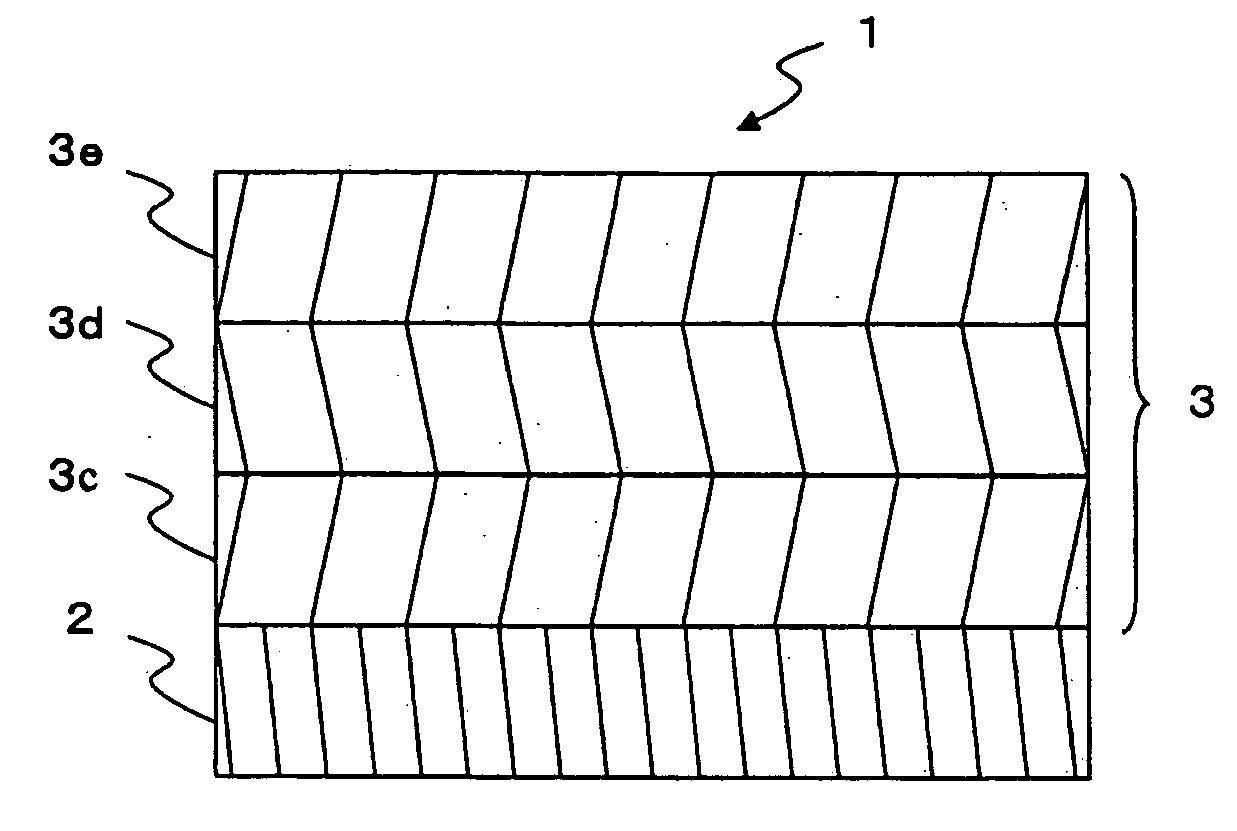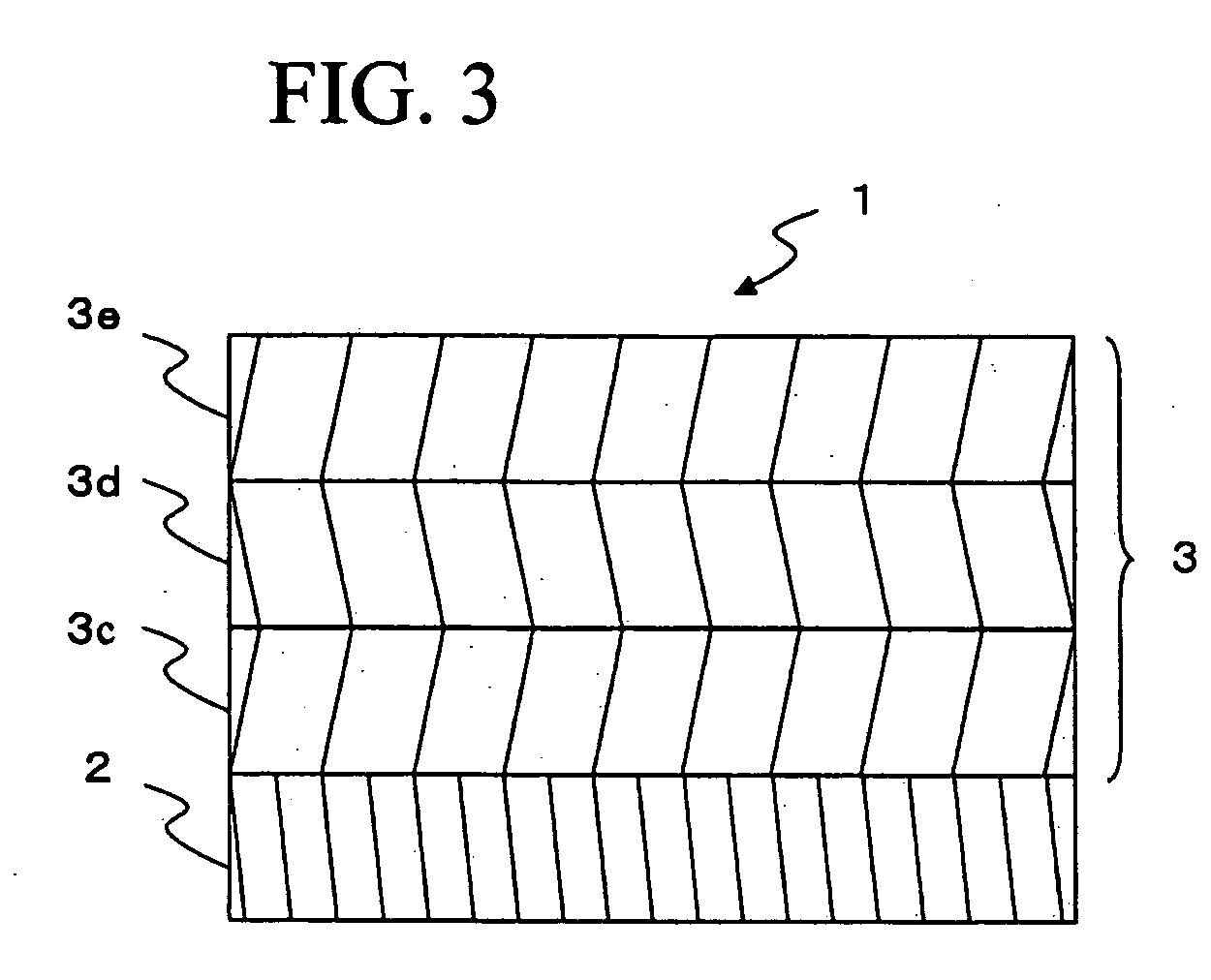R-T-B system permanent magnet and plating film
a permanent magnet and plating film technology, applied in the field of r-t-b system permanent magnets, can solve the problems of poor corrosion resistance of such magnets, difficult to freely set the amount of s contained difficult control of the s content in the plating film, so as to improve the adhesion to the magnet base body, improve the hardness of the plating film, and improve the effect of hardness
- Summary
- Abstract
- Description
- Claims
- Application Information
AI Technical Summary
Benefits of technology
Problems solved by technology
Method used
Image
Examples
example 1
[0079] A strip-shaped alloy having a certain composition was manufactured by a strip casting method. This strip-shaped alloy was made to occlude hydrogen at room temperature. The temperature was raised to about 400 to 700° C. in an Ar atmosphere, and a coarse powder was obtained by dehydrogenation.
[0080] This coarse powder was subjected to pulverizing using a jet mill. The pulverizing was conducted by purging the jet mill interior with N2 gas and then using a high-pressure N2 gas flow. The mean particle size of the obtained fine powder was 4.0 μm. It is noted that prior to carrying out the pulverizing, 0.01 to 0.10 wt. % of zinc stearate was added as a milling aid.
[0081] The obtained fine powder was compacted in a 1,200 kA / m (15 kOe) magnetic field at a pressure of 98 MPa (1.0 ton / cm2), to thereby yield a compacted body. This compacted body was sintered in a vacuum for 4 hours at 1,030° C., and then quenched. The obtained sintered body was subsequently subjected to a two-stage agi...
example 2
[0092] In this example, Cu plating was examined in the same manner as the Example 1.
[0093] Using samples consisting of the same R—T—B system permanent magnet as in Example 1, plating films were formed under the conditions illustrated in FIG. 7. As shown in FIG. 7, sample Nos. 8 to 12 were prepared by varying the plating bath composition or current density. Once the plating films were formed, they were evaluated in the same manner as in Example 1. The results are shown in FIG. 7. Based on these results, the relationship between current density and C content, the relationship between C content and plating film hardness, and the relationship between C content and plating film adhesion were found. Those results are given in FIGS. 8 and 9.
[0094] From FIGS. 7 to 9, it was confirmed that plating film hardness increases as the plating film C content increases even for Cu plating, and that adhesion also improves. For a Cu plating, a preferable C content is between 0.006 and 0.05 wt. %.
example 3
[0095] Using samples consisting of the same R—T—B system permanent magnet as in Example 1, Ni plating films were formed under the conditions illustrated in FIG. 10. Sample Nos. a and b were monolayer Ni plating, and sample Nos. c to h were multi-layer (bilayer) Ni plating. In addition, for sample Nos. c to e, the C content in the first plating layer and the second plating layer was varied by adjusting the deposition conditions of the first and second plating layers. Further, for sample Nos. f to h, the C content in the second plating layer was varied by adjusting the current density of the second plating layer.
[0096] Once Ni plating had been completed, the formed plating films were evaluated in the same manner as in Example 1. Plating film composition analysis was carried out for sample Nos. c to h (bilayer plating) using monolayer samples whose first plating layer had been plated on a sample (magnet base body) consisting of a sintered body under the same conditions as the first pl...
PUM
| Property | Measurement | Unit |
|---|---|---|
| Content | aaaaa | aaaaa |
| Hardness | aaaaa | aaaaa |
| Corrosion resistance | aaaaa | aaaaa |
Abstract
Description
Claims
Application Information
 Login to View More
Login to View More - R&D
- Intellectual Property
- Life Sciences
- Materials
- Tech Scout
- Unparalleled Data Quality
- Higher Quality Content
- 60% Fewer Hallucinations
Browse by: Latest US Patents, China's latest patents, Technical Efficacy Thesaurus, Application Domain, Technology Topic, Popular Technical Reports.
© 2025 PatSnap. All rights reserved.Legal|Privacy policy|Modern Slavery Act Transparency Statement|Sitemap|About US| Contact US: help@patsnap.com



